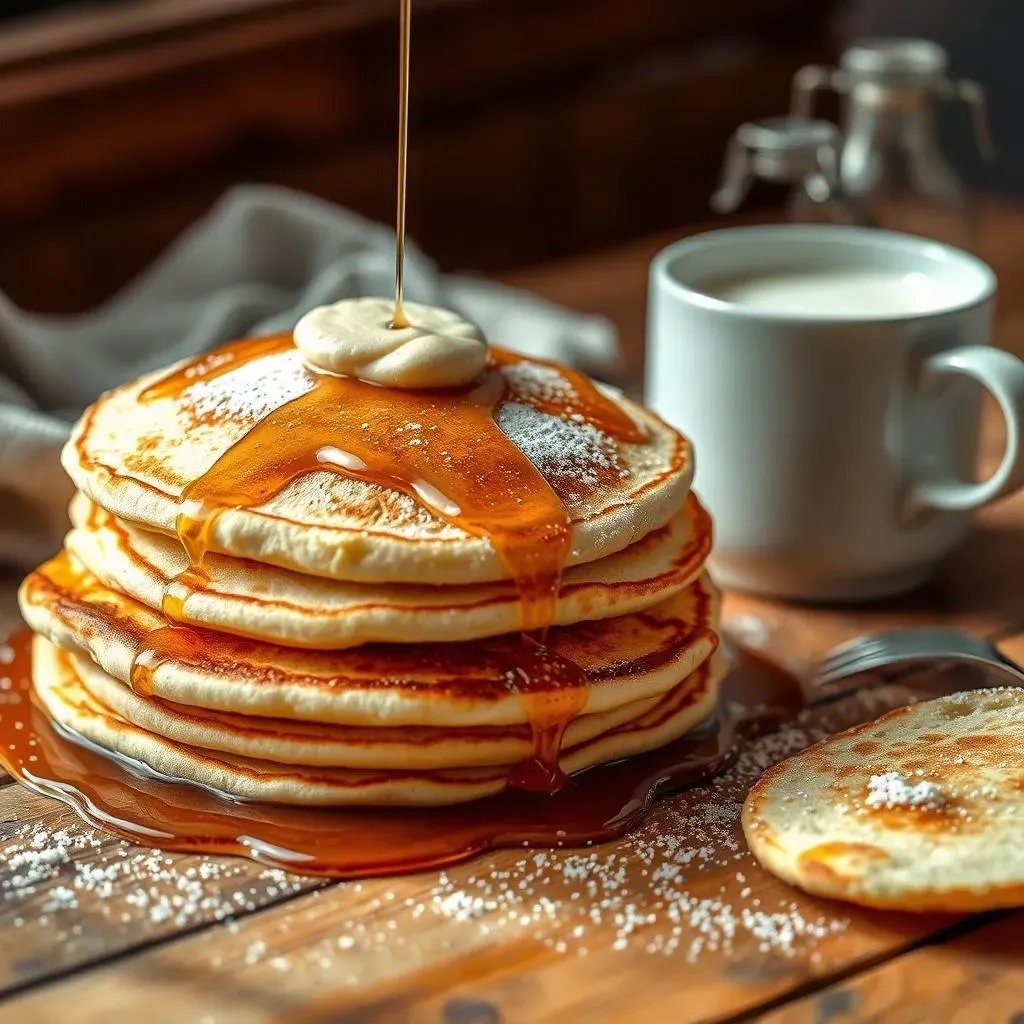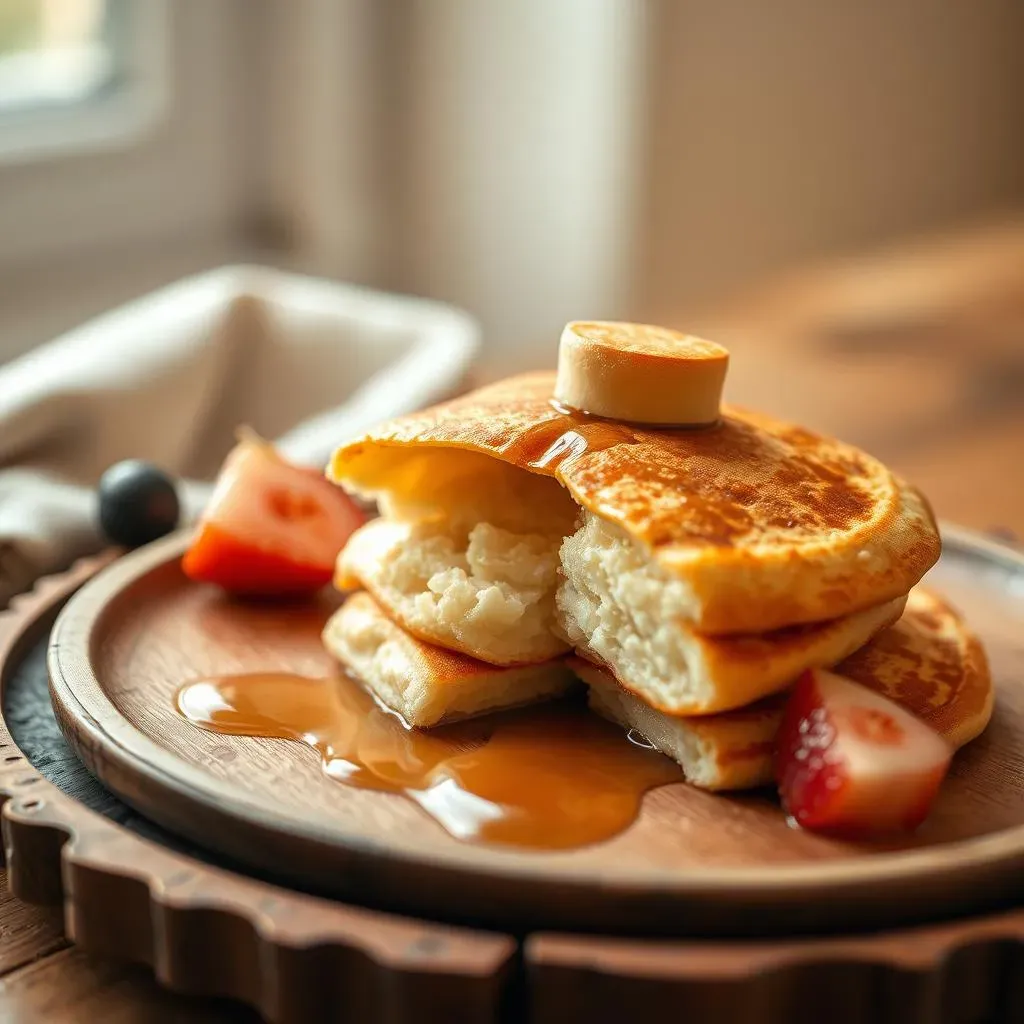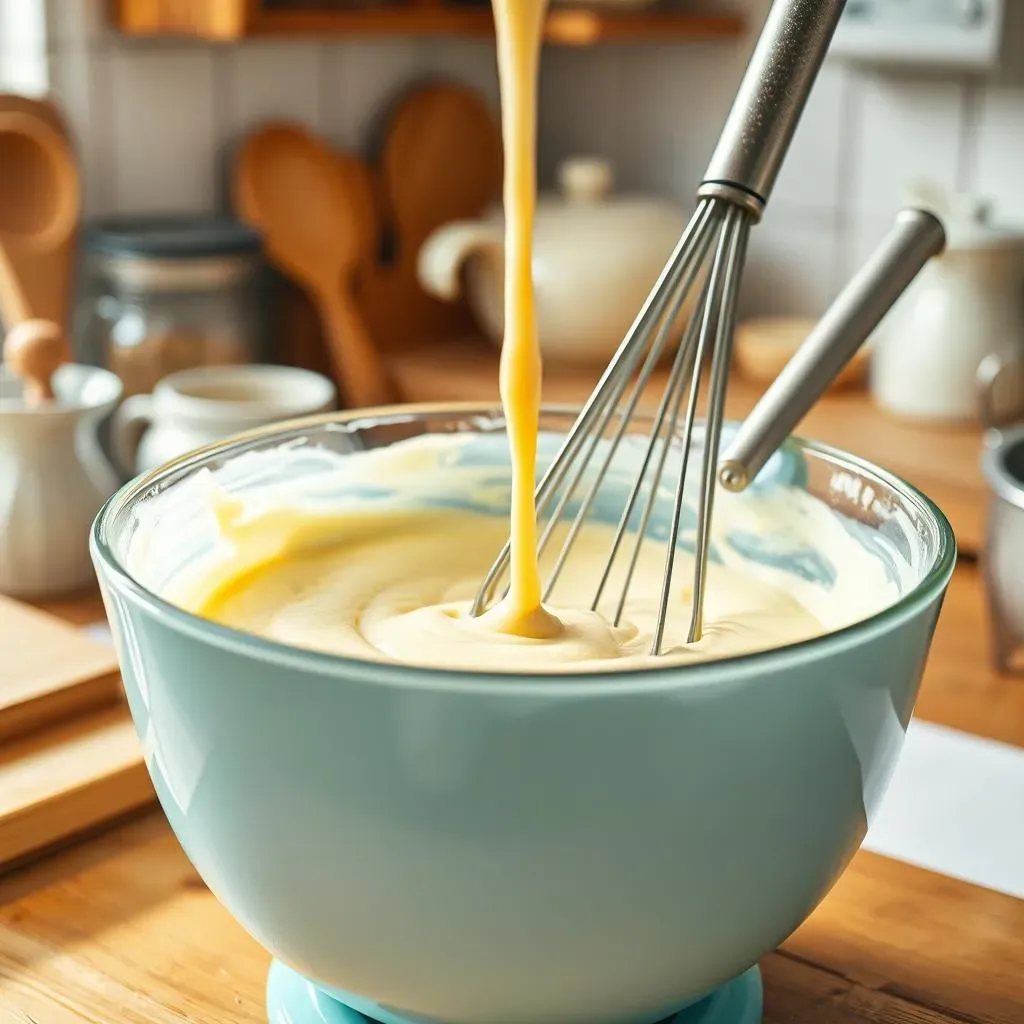Table of Contents
Ever stared at a pancake recipe, wondering "what does milk do in a pancake recipe?" You're not alone. It's a question that separates a good stack from a great one. We all know that pancakes need some kind of liquid to become that fluffy, delicious breakfast we crave, but does it really matter if you use milk or water? The short answer is: absolutely! This article will break down the science behind the batter, exploring the differences milk and water make to your pancake experience. We'll explore how milk adds not only moisture but also richness and flavor, while water offers a lighter, less dense result. We'll also tackle how to adjust liquid measurements to get the perfect batter consistency, and even how to enhance flavor if you're opting for water. So, whether you're a seasoned pancake pro or a breakfast newbie, let's get started on the journey to the perfect pancake.
The Liquid's Role: Why Pancakes Need Milk (or Water)

The Liquid's Role: Why Pancakes Need Milk (or Water)
The Science Behind the Batter
Okay, so let's get one thing straight: you can't just throw flour and eggs together and expect a fluffy pancake. It simply won't happen. You need liquid, and that's where milk or water comes in. Think of it like this: flour is the building block, but the liquid is the mortar that holds everything together. It allows the dry ingredients to mix properly, creating a smooth batter instead of a clumpy mess. Without that liquid, you'd have a sad, dry crumbly disc, not a pancake.
The liquid also helps activate the baking powder, that magical ingredient that gives pancakes their lift. When the baking powder gets wet, it releases carbon dioxide, creating air bubbles. These bubbles are what make your pancakes light and airy instead of dense and flat. Without the proper amount of liquid, the baking powder can't do its job correctly.
More Than Just Moisture
It's easy to think that the main purpose of liquid in pancakes is just to make the batter wet, but it's doing so much more than that. The liquid also affects the final texture of your pancake. It's not just about wetness, it's about the consistency of the batter, too. A batter that's too thick will result in heavy pancakes, while a batter that's too thin will spread out and become super flat. So, the right amount of liquid is key for that perfect balance.
Liquid | Primary Function |
|---|---|
Milk | Adds moisture, richness, and flavor |
Water | Provides moisture and a lighter texture |
The Foundation of a Good Pancake
Ultimately, the liquid is the foundation of your pancake. It sets the stage for all the other ingredients to do their thing. It's the unsung hero that makes everything come together to create that breakfast masterpiece. So, next time you're making pancakes, remember that the liquid is not just an afterthought, it's a crucial component that determines the final result. And understanding its role is the first step towards pancake perfection.
Milk in Pancakes: Flavor and Texture Magic

Milk in Pancakes: Flavor and Texture Magic
The Richness Factor
Okay, so we've established that liquid is essential, but let's talk about milk specifically. It's not just adding moisture; it's bringing a whole other level of richness to the party. Think of it like upgrading from a basic sedan to a luxury car. Water gets you from A to B, but milk gives you that smooth, velvety ride. The fats in milk add a certain depth of flavor that water just can't replicate. It's that subtle something that makes a pancake feel more indulgent, more satisfying.
Those fats also contribute to a softer, more tender crumb. When you bite into a pancake made with milk, you'll notice that it's not just fluffy; it's also incredibly moist and melt-in-your-mouth. This is because the fat coats the proteins in the flour, preventing them from forming tough gluten strands. The result? A pancake that's light, airy, and oh-so-delicious.
The Maillard Reaction
Now, let's get a little science-y for a second. Ever wondered why pancakes get that beautiful golden-brown crust? That's thanks to something called the Maillard reaction. It's a chemical reaction between amino acids and sugars that occurs when food is heated. Milk contains lactose, which is a sugar that plays a big role in this reaction. The result is that lovely browned surface that adds a touch of caramelized flavor and a bit of textural contrast to your pancakes.
Without the lactose from milk, you won't get that same level of browning. Your pancakes might still cook, but they'll lack that visual appeal and that subtle hint of toasted goodness. The Maillard reaction is what makes pancakes look and taste like pancakes, and milk plays a crucial role in making it happen.
Beyond the Basics
But milk's impact isn't just about flavor and browning. It also affects the overall structure of the pancake. The proteins in milk help to create a more stable batter, which means your pancakes are less likely to fall apart when you flip them. It also means they'll hold their shape better on the plate, creating a more visually appealing stack.
And let's not forget the versatility of milk! You can use whole milk for extra richness, or opt for lower-fat options if you're watching your calorie intake. You can even experiment with different types of milk, like almond or soy, to create unique flavor profiles. The possibilities are endless, and that's part of the fun of making pancakes.
Milk Component | Contribution to Pancakes |
|---|---|
Fats | Richness, tenderness, moisture |
Lactose | Browning, caramelized flavor |
Proteins | Batter stability, structure |
Water's Place: When to Choose a Lighter Pancake

Water's Place: When to Choose a Lighter Pancake
The Case for Water
Alright, so milk is the king of richness, but water has its own strengths. Sometimes, you don't want a super decadent, heavy pancake. That's where water steps in. It's like choosing a refreshing sparkling water over a creamy milkshake – both are good, but they serve different needs. Water adds moisture, sure, but it does so without adding any extra fat or flavor. This can be a good thing if you want your pancakes to be a blank canvas for toppings, or if you're simply watching your calorie intake.
Using water will give you a lighter, more delicate pancake. The batter is less dense, so the pancakes tend to be more airy and fluffy. They also cook up a little quicker. It's all about achieving a different kind of texture, a different kind of experience. Think of it as the difference between a hearty, thick slice of toast and a light, crisp cracker. Both are enjoyable, but they cater to different tastes and preferences.
Flavor Enhancement with Water
Now, some folks worry that using water means sacrificing flavor, and it's true that you won't get the same richness as with milk. But fear not! There are ways to make water-based pancakes taste amazing. You can add a little extra butter to the pan, or include a splash of vanilla extract or a pinch of cinnamon to the batter. These flavor boosters help to make up for the lack of fat, and they can even make your pancakes taste a little bit more exciting.
You can also experiment with different liquids. For example, a bit of apple juice or even a small amount of citrus juice can add a subtle sweetness and a touch of tang. The key is to be creative and play around with different combinations to find what you like best. It's all about making the pancake your own, even when using a simple base like water.
Liquid | Texture | Flavor | Best for |
|---|---|---|---|
Milk | Rich, tender, moist | Adds depth, slightly sweet | Hearty pancakes, indulgent breakfasts |
Water | Light, airy, delicate | Neutral, allows toppings to shine | Lighter pancakes, calorie-conscious choices |
Adjusting Liquids for the Perfect Pancake Recipe

Adjusting Liquids for the Perfect Pancake Recipe
The 1:1 Ratio Myth
Okay, so you've got your milk or water ready, but how much do you actually need? Most recipes will tell you to use a 1:1 ratio, meaning one cup of liquid for every cup of dry ingredients. But here's the thing: that's more of a guideline than a hard rule. It's a good starting point, but it's not a guaranteed ticket to pancake perfection. The truth is, the amount of liquid you need can vary depending on factors like the type of flour you're using, the humidity in your kitchen, and even the size of your eggs. So, don't be afraid to ditch that strict 1:1 ratio if your batter isn't looking quite right.
Instead of blindly following a recipe, start by adding about half of the liquid, and then slowly add more until you reach the desired consistency. You're looking for a batter that's pourable, but not too runny. It should be thick enough to hold its shape when you drop it onto the griddle, but thin enough to spread out slightly. Think of it like a thick cream, not too watery, not too stiff. Remember, it's easier to add more liquid than to take it away, so always err on the side of caution.
Troubleshooting Your Batter
Sometimes, despite your best efforts, your batter just isn't cooperating. Maybe it's too thick, and you're ending up with dense, hockey-puck pancakes. Or maybe it's too thin, and your pancakes are spreading out like sad, flat puddles. If your batter is too thick, add a tablespoon of liquid at a time, mixing well after each addition, until you reach the right consistency. If it's too thin, you've got a couple of options. You can try adding a tablespoon of flour or a bit of cornmeal to thicken things up. Or, if you're feeling adventurous, a little bit of cocoa powder can also do the trick. Just remember to add them gradually and mix well to avoid lumps.
And hey, sometimes you just need to start over. It's not a failure; it's a learning opportunity. Each time you make pancakes, you'll get a better feel for the right consistency, and you'll learn to adjust the liquid accordingly. It's all part of the pancake-making journey. Don't be afraid to experiment, and don't be too hard on yourself if things don't go perfectly the first time around. The most important thing is to have fun and enjoy the process, and of course, the delicious pancakes at the end.
Batter Issue | Possible Solution |
|---|---|
Too Thick | Add liquid (milk or water) one tablespoon at a time |
Too Thin | Add flour, cornmeal, or cocoa powder one tablespoon at a time |
Lumpy | Mix more thoroughly or pass the batter through a sieve |
Wrapping Up the Pancake Batter Battle
So, what have we learned? Milk brings richness, flavor, and a tender crumb to your pancakes, while water offers a lighter, less dense texture. Both have their place in the pancake world, and the best choice depends on your personal preference. Don't be afraid to experiment with both, adjusting the liquid and other ingredients to find your perfect pancake recipe. Remember, the key to a great pancake isn't just the liquid, but also the quality of your mix and your technique. Now go forth and flip some amazing pancakes!